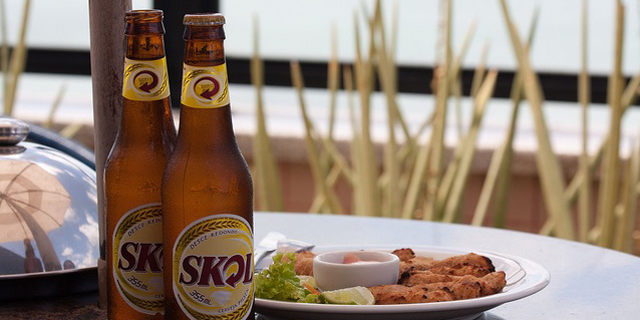With a population of more than 190 million people and a low legal drinking age of just 18, Brazil is the third-largest beer producer in the world behind China and the U.S.
A corporate merger in 2004 between Brazil’s AmBev and Belgium’s Interbrew formed the world’s largest brewer, InBev. In 2008, the company merged yet again with Anheuser-Busch of the U.S. to create Anheuser-Busch InBev and corner a whopping 25 percent of the global market share. The conglomerate owns the three best-selling beer brands in Brazil: Skol, Brahma, and Antarctica.
Ancient Ale Tales
The art of beer brewing began before the birth of Christ in ancient Egypt and Mesopotamia, and got its start in South America with the Incas using maize, many centuries before Spanish settlers came to the continent.
Portuguese colonists who immigrated to Brazil were no strangers to the suds, by the 14th century, beer business was booming in Europe. But while the masses enjoyed cachaça (sugar cane rum), home cooks made do with a brew known as “gengibirra” with corn flour, ginger, lemon peel and water. Since Portuguese vinters feared importing beer would damper wine sales, it wasn’t until 1836 when a beer-loving king Dom Pedro opened ports to England that German beers were finally brought to Brazil.
The city of Petropolis in the state of Rio de Janeiro was birthplace to Bohemia in 1853, the oldest national beer still in distribution. Brahma was released in 1882 and Antarctica in 1885. Skol (named after the drinking toast of the Scandinavian Vikings), was creation of Swedish brand Carlsberg that began fabrication in Brazil in 1967.
[ pagebreak ]Brazilian Brewing Basics
The majority of beers in Brazil are called pilsen made in the style of a standard American lager, only with some variation in the production process and ingredients. The tropical climate and landscape means scarce staple additives like barley and wheat, and no hops (a flower used for flavoring and preservatives) so corn and un-malted cereals are used in their place. A short fermentation period supplemented with artificial preservatives and carbonation make for a slight chemical bite and aftertaste when compared to their North American cousins.
A favorite among locals are draught beers called chopp (pronounced “shop-ee” derived from the German word schopp for draft beer) that are unpasteurized without any antioxidants, preservatives or stabilizers. These light lagers are served ice cold with a thick head of foam in a 300 ml, chilled glass.
Buying Brazilian Beers
In spite of a strong corporate connection between the countries, there’s a relatively weak distribution of Brazilian beers in the U.S. A pair you’re likely to find at your local beverage store and online are imported in partnership with Heineken.
Xingu Black, named after an at-risk tributary of the Amazon River, is a slightly bitter German-style Schwarzbier lager with a full bodied finish. The rich, creamy dark brew received a gold medal award from the Beverage Testing Institute of Chicago. Its blend of sweet treacle and black licorice-flavored anise stands up well to a juicy steak or a hearty meat stew.
For a light-bodied lager to cool off your summer cook out guests, go for the German-style Brazilian pilsner Palma Louca Beer. The malt fragrance and smooth flavor of this pale yellow brew will complement cuisine from the grill.


![Making Mealtime Matter with La Familia: Easy Sofrito [Video]](https://thelatinkitchen.com/wp-content/uploads/2015/10/sofrito-shutterstock__0-500x383.jpg)
![Easy Latin Smoothies: Goji Berry Smoothie [Video]](https://thelatinkitchen.com/wp-content/uploads/2015/12/goji_berry-shutterstock_-500x383.jpg)
















![Fun and Fast Recipes: Fiesta Cabbage Salad [Video]](https://thelatinkitchen.com/wp-content/uploads/2015/11/fiesta_cabbage_slaw-shutterstock_-500x383.jpg)









